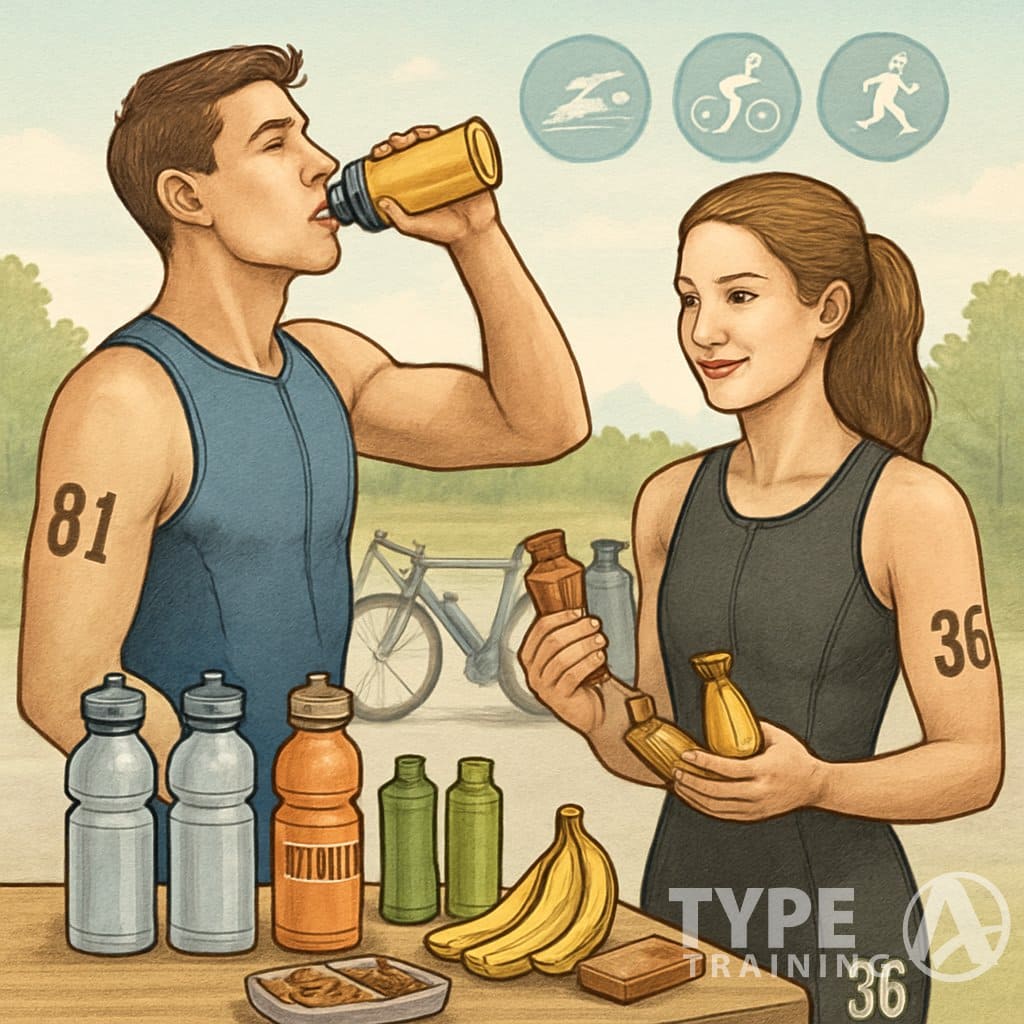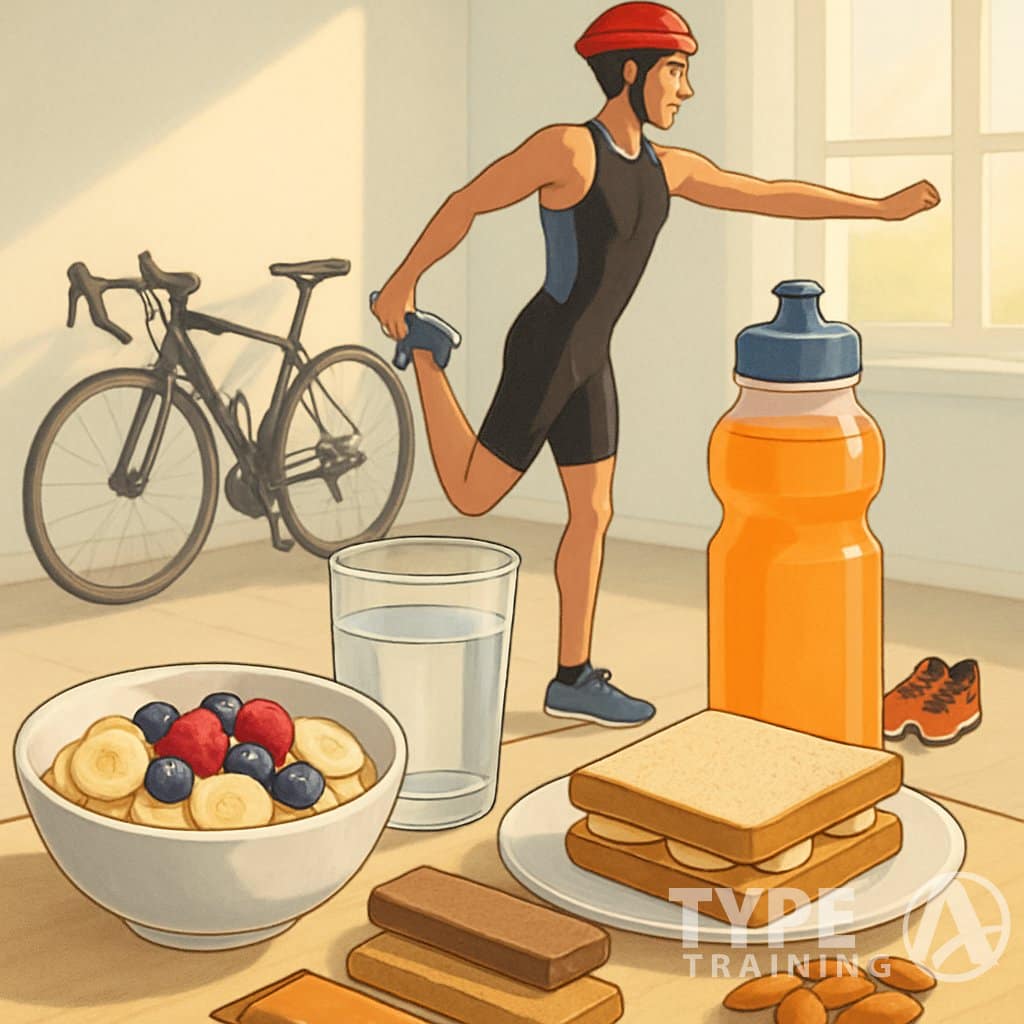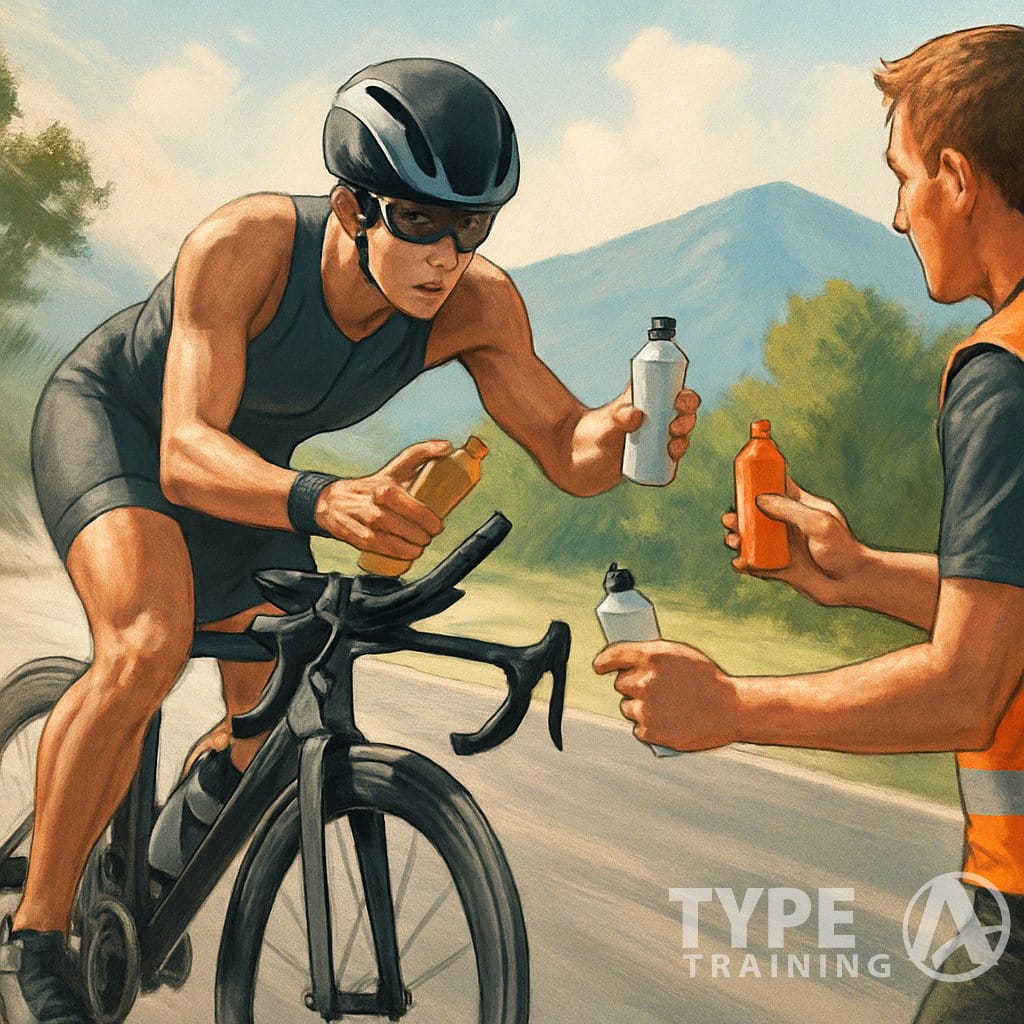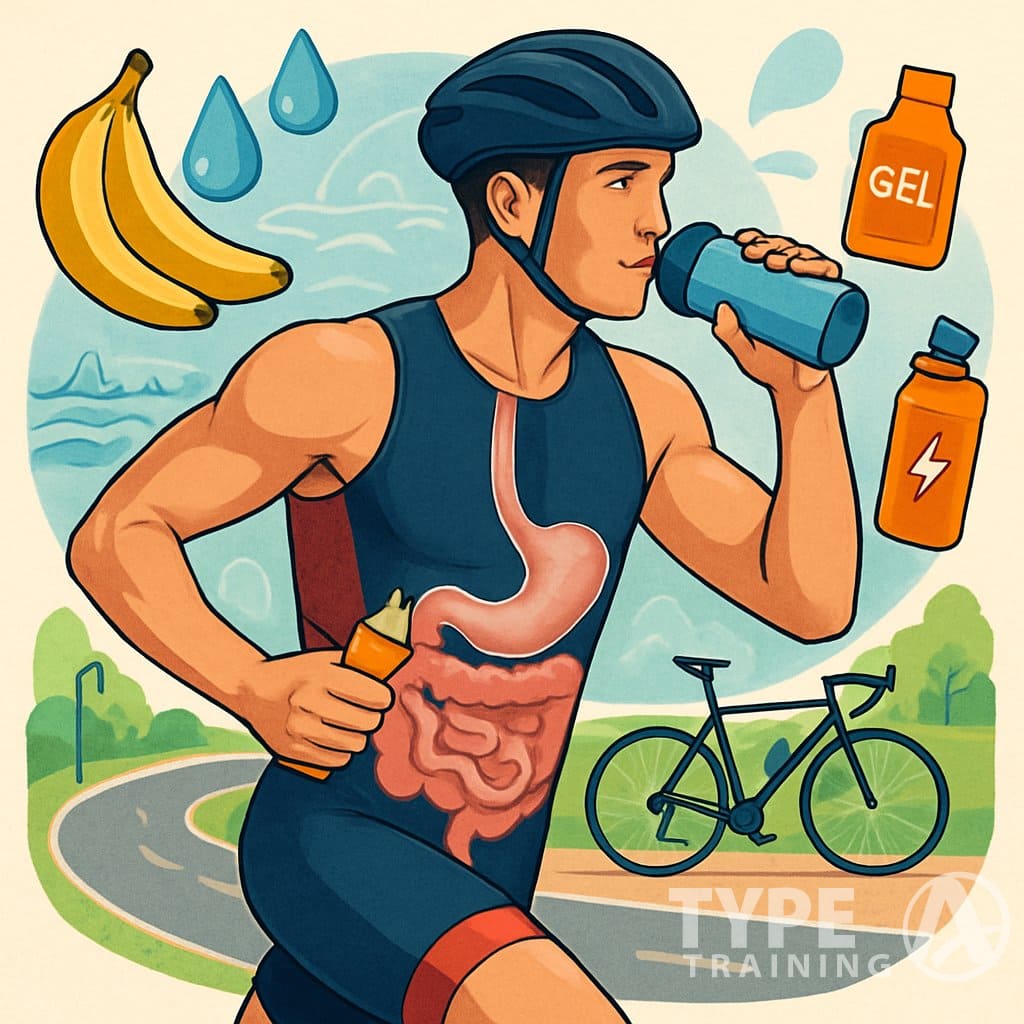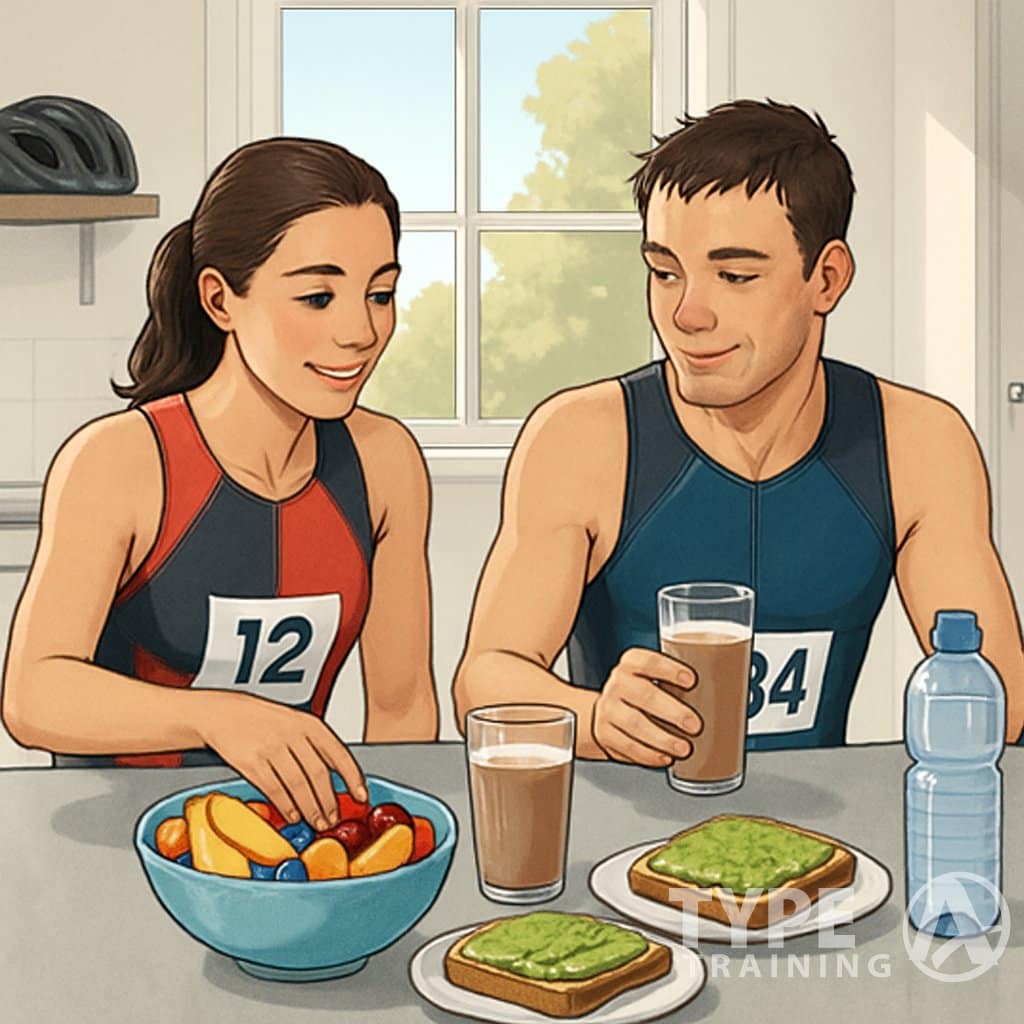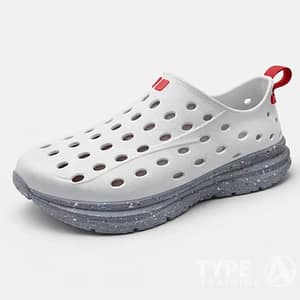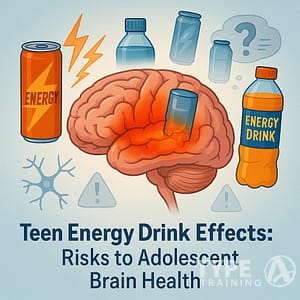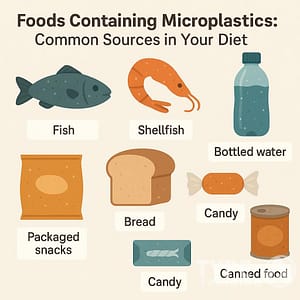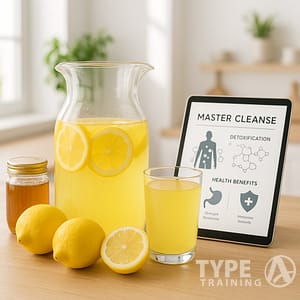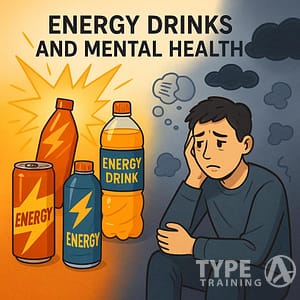Wondering how to fuel your body for a sprint triathlon? These races might be shorter, but nutrition still matters more than you’d think.
A sprint triathlon should be fueled by eating healthy foods in the weeks before your race, followed by light carb loading in the 36 hours before the event, and minimal fueling during the actual race. This way, you’ll have full glycogen stores without making your race day plan a headache.
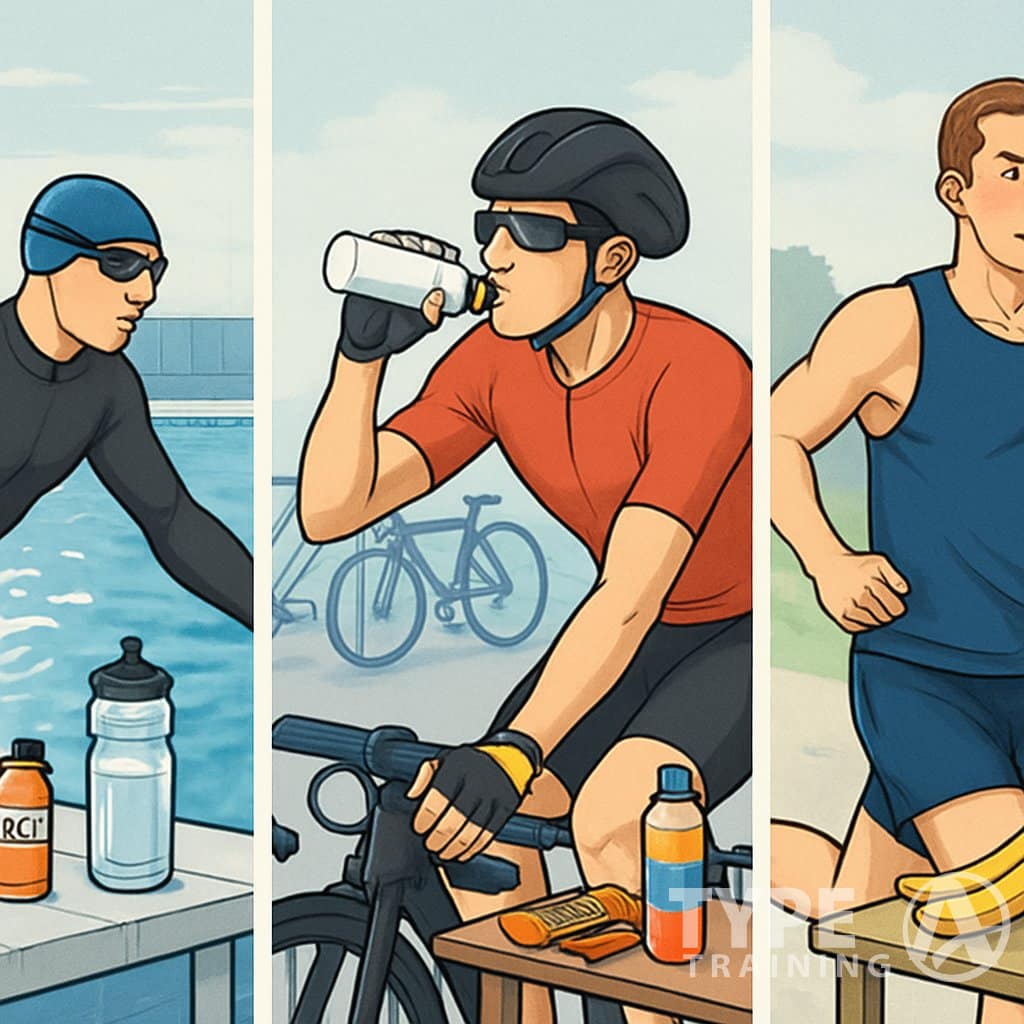
Lots of new triathletes overthink nutrition for sprints. Since most folks finish in 1 to 1.5 hours, your body can mostly rely on stored muscle glycogen.
Popular posts:
Focus on pre-race nutrition and hydrating on the bike, rather than elaborate fueling plans. Remember, your gut doesn’t work as well at high intensity, so keep it simple and you’ll thank yourself later.
Key Takeaways
- Pre-race nutrition with moderate carb loading 36 hours before your sprint triathlon gives you enough energy for the whole race.
- Hydration and minimal fueling on the bike maintain performance and help avoid stomach issues during the hard effort.
- For recovery, aim for about 20g of protein and 80g of carbs after the race to speed up muscle repair without overdoing calories.
Understanding Sprint Triathlon Nutrition
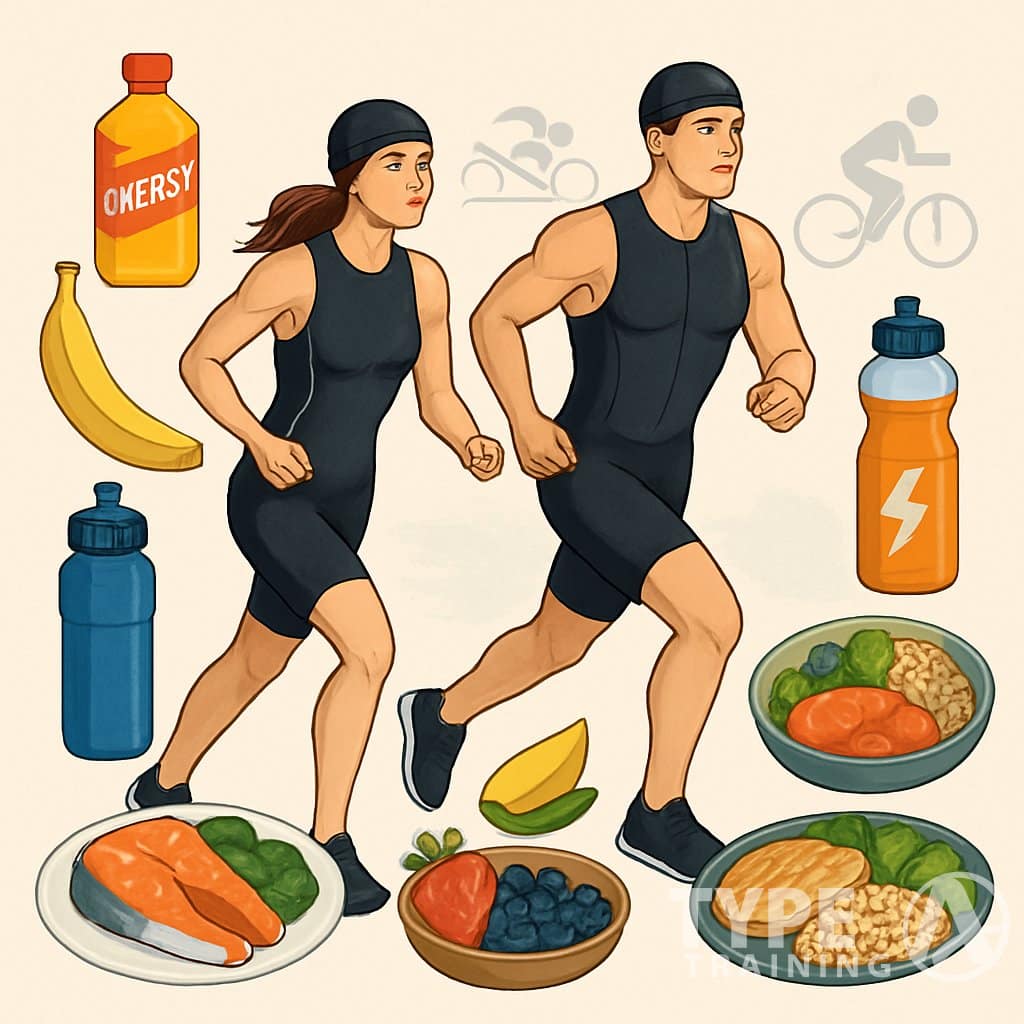
Good nutrition lays the groundwork for solid triathlon performance, especially when intensity is high. The right fuel helps keep your energy steady and supports recovery for all three legs—swim, bike, and run.
Key Macronutrients for Endurance
Protein plays a crucial role in muscle repair and recovery. Most triathletes do best with 1.2-1.6g of protein per kg of body weight daily to build and maintain muscle.
Carbohydrates are your go-to fuel in a sprint triathlon. They power your high-intensity efforts in every discipline.
Most people need 5-7g of carbs per kg of body weight on training days. Fats, though not the main fuel during a sprint, still matter for health—think avocados, nuts, and olive oil for hormone support and vitamin absorption.
Hydration isn’t technically a macronutrient, but it’s just as important. Drink water all day and aim for pale yellow urine as a quick hydration check.
Calorie Needs and Energy Balance
Sprint triathlons burn somewhere around 500-900 calories, depending on your size, course, and effort. You need to balance energy for both performance and recovery.
During training, you might need 2,000-3,000 calories a day. Adjust up or down based on how much you’re training and your body’s needs.
Try tracking your food intake for a few days to get a feel for your baseline. Undereating can hurt your performance, while overeating just adds extra weight you don’t want to carry.
Fill your plate with nutrient-dense foods, not empty calories. On heavy training days, a slight surplus—maybe 200-300 calories—can help, but you’ll want to eat less on rest days. Listen to your body’s hunger cues and make sure you’re getting what you need.
The Role of Carbohydrates and Glycogen
Muscle glycogen is your main fuel for high-intensity efforts in a sprint triathlon. These stores run out fast, so you need to keep them topped off.
For races lasting 60-90 minutes, you’ll burn through glycogen quickly. Carb loading isn’t as crucial for sprints as it is for longer races, but bumping up your carbs the day before can help.
If your event goes over 75 minutes, try to get 30-60g of carbs per hour. Liquid nutrition on the bike is usually easiest—think 3-4 ounces every 10-15 minutes.
After the race, eat about 80g of carbs within 30 minutes to refill your glycogen stores. Your body’s extra good at absorbing carbs right after exercise, so don’t wait around.
Developing Your Sprint Triathlon Fueling Plan
Building a good fueling plan for your sprint triathlon means thinking about hydration, carbs, protein, and electrolytes. Your body needs a certain amount of each to get through the swim, bike, and run.
Calculating Hydration Needs
Hydration can make or break your race. Drink 16-20 oz of water about two hours before the start, so your body has time to use what it needs and get rid of the rest.
During the race, your fluid needs depend on things like weather, sweat rate, and race duration:
- Weather conditions (temperature, humidity)
- Your sweat rate (usually 16-32 oz per hour)
- Race duration (most sprints last 1-1.5 hours)
Most people do fine with 12-16 oz of fluid per hour. If you want to be precise, weigh yourself before and after training to see how much water you lose.
You probably won’t need to drink during the swim. Focus on hydrating during the bike, since it’s easier to drink then, and maybe take a small sip during the run if you feel like you need it.
Selecting Carbohydrate Sources
Carbs are the main fuel for your sprint triathlon. For races lasting 1-1.5 hours, you’ll mostly use stored muscle glycogen instead of race-day fuel.
The best carb sources:
- Pre-race: Oatmeal, toast with honey, bananas (2-3 hours before)
- During race: Sports drinks, gels, or chews with glucose/maltodextrin
- Transition areas: Small, easy-to-digest stuff like energy chews
Most sprint triathletes need 30-60g of carbs per hour during the race. You can get this from sports drinks or small snacks.
If your race is under 90 minutes, you might not need extra carbs during the event—just a sports drink could be enough. Your pre-race meal will probably cover you.
Balancing Fats and Proteins
Carbs power your race, but fats and proteins still matter. Fats give you steady energy, and proteins keep your muscles working right.
Your pre-race meal should include:
- Small amounts of protein (5-10g)
- Not too much fat, to avoid stomach trouble
- Example: Toast with a thin layer of nut butter
Skip heavy protein or fat right before or during your triathlon—they’re slow to digest and can upset your stomach.
After the race, shoot for 20g of protein within 30 minutes to help your muscles recover. Chocolate milk, a protein shake, or a small meal with lean protein and carbs works well.
Planning Electrolyte Intake
Electrolytes keep your fluid balance, muscles, and nerves working right. Even in a sprint, you’ll sweat out some electrolytes.
Main electrolytes to think about:
- Sodium: 500-700mg per hour during exercise
- Potassium: Helps prevent muscle cramps
- Magnesium: Keeps muscles firing
For most people, a sports drink with electrolytes is enough. These drinks usually have the right balance of carbs and electrolytes for racing.
If you sweat a lot or it’s hot, you might want to add an electrolyte tablet or salt tablet to your water. Watch for signs like cramps, headaches, or feeling wiped out—they can mean you need more electrolytes.
Pre-race, eat electrolyte-rich foods like bananas (for potassium) or lightly salted oatmeal (for sodium). This gets you ready for the race without needing much during the event.
Pre-Race Nutrition Strategies
What you eat before a sprint triathlon can really affect your race. Good fueling tops off your energy stores and helps you avoid stomach issues.
Choosing Familiar Foods
Stick with foods you know and trust before your sprint triathlon. Race day isn’t the moment to try new foods or supplements.
Your pre-race nutrition should include foods you’ve eaten during training and know won’t upset your stomach.
Keep your normal eating routine in the days leading up to the race. If you usually eat three meals, keep doing that.
It helps to keep a food journal during training to track which meals give you the most energy. Jot down anything that causes bloating or stomach discomfort so you can steer clear of it before race day.
Honestly, familiar foods mean fewer surprises and a smoother performance. Why risk it?
The Ideal Pre-Race Dinner
Your dinner the night before should focus on easily digestible carbs, some protein, and just a little fat. Try to eat this meal about 12-14 hours before your race starts.
Good options include:
- Pasta with a light tomato sauce and a small portion of lean protein
- Rice with grilled chicken and some steamed veggies
- Baked potato with a bit of protein and vegetables
A minor carb-loading approach helps even for sprint distances. Try bumping up your carb intake in the 36 hours before race day to really fill up those glycogen stores.
Keep your portions moderate—overeating can make it hard to sleep and leave you feeling heavy in the morning. Stay hydrated, but ease up on fluids as you get close to bedtime.
Designing the Perfect Race Day Breakfast
Eat your race day breakfast about 2.5-3 hours before the start so your body has time to digest. Shoot for 300-500 calories, depending on your size and how long you’ll be racing.
Ideal breakfast options include:
- Oatmeal with banana and honey
- Toast with nut butter and jam
- Low-fiber cereal with milk and berries
Macronutrient breakdown:
| Nutrient | Percentage | Purpose |
|---|---|---|
| Carbohydrates | 70-80% | Primary fuel source |
| Protein | 15-20% | Satiety and muscle support |
| Fat | 5-10% | Limited for quick digestion |
Drink 16-20oz of water or a sports drink with breakfast. If your race doesn’t start until later, maybe have a small carb snack—like a banana or an energy bar—about an hour before the gun goes off.
Skip high-fiber, fatty, or brand-new foods that could upset your stomach during the race.
In-Race Fueling for Optimal Performance
Dialing in your nutrition during a sprint triathlon can really make or break your race. You need the right fuel at the right time to keep your energy up through all three legs.
Timing Carbohydrate Intake
In a sprint-distance triathlon, your body mostly runs on stored muscle glycogen. Most folks finish these races in about 60-90 minutes, so your fueling needs are pretty minimal—but not zero.
Bike Leg: This is the best time to get in some calories. Around 15-20 minutes into the bike, take on 25-30g of carbs.
Run Leg: If your race goes over 75 minutes, you might want a small hit of carbs (15-20g) early on the run.
Some say sprint triathlons don’t require in-race fueling, but a little can help your confidence and ward off a late bonk—especially if you didn’t eat enough before.
Managing Energy Gels, Chews, and Drinks
Picking the right race-day fuel depends on your preferences and what your stomach tolerates.
Energy Gels: These are compact, easy to stash, and usually give you 20-25g of carbs per packet. Always take them with water to avoid stomach issues.
Energy Chews: Similar to gels, just a different texture. Some athletes find them easier to handle when they’re pushing hard.
Sports Drinks: These give you hydration and carbs at the same time, which is pretty handy for sprint races.
Try everything in training first. The best product is the one that:
- Doesn’t upset your stomach
- Gives you quick energy
- Is easy to eat or drink while moving
Bring only what you’ll actually use. For most, one gel or a single serving of chews is plenty for a sprint.
Utilizing Aid Stations
Aid stations in sprint triathlons are usually sparse, but they can be helpful if you plan ahead.
Pre-Race Reconnaissance: Check the course map so you know where the aid stations are. Surprises aren’t fun mid-race.
Bike Course: If there’s an aid station on the bike, decide before the race if you’ll use it or just carry your own supplies. Most experienced triathletes bring what they need so they don’t have to stop.
Run Course: Aid stations matter most here. When you see one coming up:
- Grab water, even if you don’t feel thirsty
- Slow down a touch, but try not to stop completely
- Pinch the cup to make a spout—way easier to drink while moving
For sprints, focus on electrolyte replacement at aid stations, especially on hot days. Even in short events, dehydration can zap your performance.
Addressing Common Digestive and Hydration Issues
Digestive problems and hydration slip-ups can throw off even the best-prepared triathletes. Managing these issues takes some planning before and during your race so your body can actually use the fuel you give it.
Preventing Gastrointestinal Distress
GI distress is pretty common in triathlons, but you can avoid a lot of it with some prep. Don’t try new foods or supplements on race day. Test your nutrition plan during training to figure out what works for you.
Timing makes a big difference. Eat your pre-race meal 2-3 hours before the start so your body has time to process it. Try these tricks:
- Skip high-fiber foods for 24 hours before racing
- Pick easy carbs like white rice or bananas
- Steer clear of fatty, spicy, or super acidic foods
- Cut back on caffeine if you’re sensitive
Train your gut by practicing your race-day fueling during workouts. Your body can learn to handle fuel while moving if you give it a chance.
Dealing with Digestive Issues
If stomach problems hit during your race, it’s good to have a plan B. First, slow your pace for a bit to let your system settle down.
For nausea or bloating, try these:
Quick Solutions:
- Take small sips of fluids instead of big gulps
- Switch to plain water if sports drinks aren’t sitting well
- Try simple carbs like gels—they’re quick to digest
- Focus on steady breathing to calm things down
Water-soluble fiber can help regulate digestion ahead of race day by making things move more smoothly.
If you’re prone to acid reflux, bring antacid tablets. Lots of triathletes find that backing off the intensity for a minute or two can clear up minor GI issues without ruining their race.
Monitoring Electrolytes
Electrolyte balance matters for preventing muscle cramps and keeping your performance steady. Even for sprints, it’s still important.
Watch these key electrolytes:
- Sodium: You lose the most of this in sweat
- Potassium: Helps muscles work properly
- Magnesium: Can help ward off cramps
Signs of imbalance include muscle twitching, cramps, or feeling foggy. Hydration is about balance—too little hurts, but so does too much.
For most, a sports drink with electrolytes is enough. If you sweat a lot or it’s a hot day, electrolyte tablets or capsules might help.
Test your electrolyte plan during training. Your needs depend on how much you sweat, the weather, and honestly, just your own body.
Recovery Nutrition After a Sprint Triathlon
What you eat right after the finish line really affects how fast you recover. The right choices can help with soreness and get you ready for your next session.
Key Components of Recovery Meals
For recovery, aim for a solid balance of nutrients. Try to get about 20 grams of protein within 30-60 minutes after you finish—this helps kickstart muscle repair.
Carbs matter just as much—shoot for about 80 grams to refill your glycogen. Good options include:
- Pasta or rice with some lean protein
- Fruit smoothies with protein powder
- Chocolate milk (honestly, it’s a classic for a reason—protein and carbs together)
- Energy bars with a balanced mix
Don’t stress about making a fancy meal right after your race. Simple, easy-to-digest foods usually work best, especially if your stomach isn’t super hungry from all the effort.
Supporting Muscle Repair and Rehydration
Protein-rich recovery drinks like smoothies or chocolate milk give tired muscles a quick shot at recovery. They kickstart the repair process right away, which is honestly a relief after a tough race.
Rehydration? It’s more important than most people think. You should sip fluids regularly for hours after you finish.
Rehydration Formula:
- Drink 16-24 oz of fluid for every pound you lose during the race.
- Make sure you include electrolytes to restore sodium balance.
Plenty of triathletes grab recovery bars with carbs and protein as their first move. Once your appetite comes back, follow up with a full meal.
Your drink choice actually matters here. Water’s good, but it can’t do it all—sports drinks or electrolyte tablets mixed into water help replace the stuff you sweat out.

